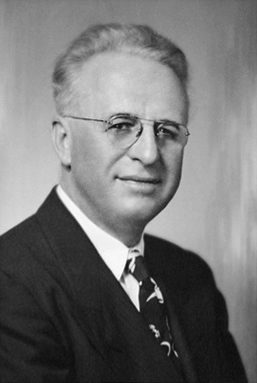
American medicine underwent drastic reform in the first two decades of this century. The folk medicine and shadowy knowledge of the late 1800s were replaced by the science of Pasteur, Lister, and Koch. Through the effort of the American Medical Association (AMA), standards were raised in physician education, licensure, and hospital affiliation. To improve treatment, America, in effect, gave to the generation of Progressive Era physicians control over medical practice, often by legal statute. For example, potent drugs became available only through an MD’s prescription.
This domination by physicians extended to medical journals, which were published by state and local societies and the AMA (eg, JAMA). The line was broken by Medical Economics (ME)in 1922, but clinical journals were the province of organized medicine. Jacob G. Cohen was to change this system, moved by his entrepreneurial instincts and a need by practicing MDs to keep abreast with the rapid pace of medical practice.
“Jack” Cohen was a graduate in chemistry from the University of Minnesota. After graduation in the late 1920s, he began writing a health column for a local newspaper. With his interest aroused on the subject of health, he and his brother, Lou, purchased the dental publication Dental Practice—one of the first “controlled circulation” professional journals. A short time later, they acquired the journal Lancet, which was the publication of the Minnesota Medical Society. The stage was set in 1931 for the next big step—Modern Medicine (MM).
Just as ME had met a need among MDs for help in managing the financial side of their practices, MM was designed to help physicians deal with their informational needs to keep up with the expanding medical literature. It was pocket-sized for on-the-go reading with short, to-the-point abstracts of significant research papers. Distributed free to physicians, it was the first independently published clinical journal. Success was immediate as practicing MDs, particularly general practitioners, saw its value in keeping them current with the latest findings.
Not surprisingly, the establishment did not look favorably on Modern Medicine invading its domain. No less a figure than JAMA’s formidable editor, Dr. Morris Fishbein, attacked “controlled circulation,” nonofficial medical publications in an editorial, calling them “throw-away journals” and suggesting that they be shunned by AMA members. Cohen’s response was to commission the Starch Research Organization to conduct one of the first readership studies of a medical journal. The study showed that Fishbein’s admonition was not being followed by physicians: Modern Medicine’s readership was equal to that of any official clinical publication. This landmark study ushered in a new era of data-oriented media analysis in journal selection.
Cohen went on to other publishing ventures, founding Geriatrics in 1946, Postgraduate Medicine in 1947, and Neurology in 1951. Additionally he launched international editions of Modern Medicine beginning with Canada in 1946 and eventually extending publication to Europe and Asia.
Over the years, Modern Medicine Publications, Inc., which had begun with a partnership between two brothers, became even more of a family business, including the Cohen’s brothers-in-law, Marvin and Jay Herz, their nephew, Burt Cohen, and other family members.
All publications, except Postgraduate Medicine, were sold in the early 1960s and have passed through several owners since then. Modern Medicine is now an Advanstar property. Postgraduate Medicine was acquired by McGraw-Hill from the Cohens in the late 1960s.
After a long and productive career, Cohen retired. He remained active with Minneapolis charities. He died in 1952.